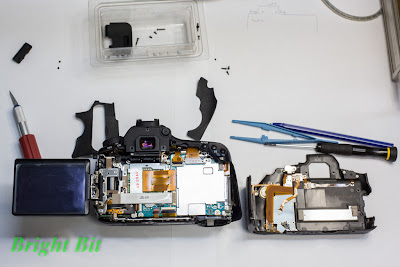All this was last summer. This year had some problems with the brakes which turned 4 years without any service so I thought going to a bike center to change the oil. To my surprise I found out that my "new" chain was all trash once more to the point that the cassette needed to be changed also.
Not happy news considering the costs. Conclusion: a chain checker device would have been nice to have to keep a close eye on chain wear and save my cassette at least.
After long searches on the net found there are actually three types of devices for this purpose:
#1 the simplest, cheapest things to get are go/no go gauges that indicate whether or not the chain needs replacement. At best these gizmos have a 2 level test for wear. Being the geek type that I am of course this wouldn't suffice.
| BBB Chain Checker |
#2 measuring tools that actually tell you something more about that wear and give more power to the user for monitoring how things progress in time.
| Park Tool Chain Checker - CC-2 |
#3 the really geek stuff, measuring tools like #2 but electronic ones this time, with digital displays and all the rest. No need to mention these are the most expensive solution
| KMC Digital Chain Checker |
There's quite a lot of material to read on the subject and I won't duplicate it here. For those into the subject you should start with the good old wiki for the basic stuff: en.wikipedia.org/wiki/Bicycle_chain, Mr. Sheldon for some more in-depth: sheldonbrown.com/chains.html, and google.com for any other questions. Another must read material is found here and talks about more subtle things like wear types and measurement errors.
Getting back to the tool in focus, here we have the Unior 1643/4 which is a chain checker of #2 type. The operating principle is quite straight forward: a metal piece with two vertical pins at both ends, one fixed, one mobile through an off center placement on a labeled rotating disk. The markings on the label are the actual estimated chain wear, between 0 to 1.2 mm or percentage. These markings should be taken with a grain of salt though as a new chain won't read 0 but more likely somewhere around 0.3mm so for accurate readings and decisions a measurement should be taken with every new chain installed. The theory states that a chain is considered worn out and in immediate need of replacement at 1mm stretch across it's whole length. Off course a good practice rule would be to change the chain a little earlier in order to avoid extra wear on the cassette and any unwanted accidents caused by chain slips or breaks.
The package in which it comes is made of cardboard, with not much interesting info on it.
Inside you find the tool wrapped nicely in protective foam. This foam is good to keep for storage keeping as it protects the pins from accidental bending but I found the box to be more conveniently replaced with a zip bag.

Can't think of what more there is to be said about such a simple and straight forward tool. All else I could think of was to actually test that claimed weight on the package which states 168g for the tool while I only got 165g for the tool, foam and package.









